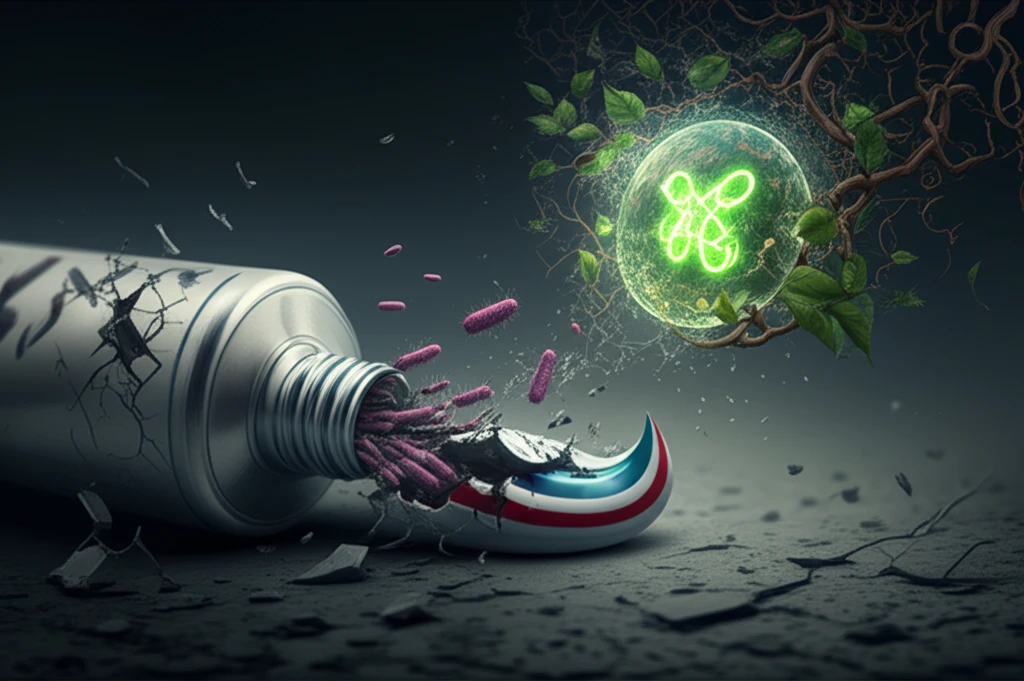
Is Your Toothpaste Spreading Superbugs? The Hidden Dangers of Triclosan
"New research reveals how triclosan, a common ingredient in personal care products, promotes antibiotic resistance and what you can do to protect yourself."
Antibiotic resistance is a growing global crisis, threatening to reverse decades of medical progress. While the overuse of antibiotics is a well-known culprit, emerging research suggests that other, more subtle factors may also be at play. One such factor is the widespread use of non-antibiotic antimicrobials (NAAMs), chemicals designed to kill or inhibit the growth of microorganisms, in everyday products.
Triclosan (TCS) is one of the most common NAAMs. For years, it has been added to a vast array of consumer goods, including toothpaste, soaps, cosmetics, and even plastics, to prevent bacterial contamination. Its ubiquity means that TCS is now a common environmental contaminant, found in rivers, lakes, and even our own bodies. But what if this seemingly harmless ingredient is silently contributing to the rise of antibiotic-resistant bacteria, or "superbugs"?
A groundbreaking study published in Environment International sheds light on this very concern. Researchers investigated whether TCS, at concentrations typically found in the environment, can promote the horizontal transfer of antibiotic resistance genes between bacteria. This process, known as horizontal gene transfer (HGT), allows bacteria to share genetic material, including the genes that make them resistant to antibiotics, and could accelerate the evolution and spread of superbugs.
Triclosan: A Silent Driver of Antibiotic Resistance?

The researchers focused on the ability of triclosan to facilitate the transfer of antibiotic resistance genes (ARGs) between bacteria through a process called conjugation. This is essentially bacterial sex, where genetic material, including resistance genes, are passed from one bacterium to another.
- Increased Gene Transfer: Even at low, environmentally relevant concentrations, TCS significantly increased the rate at which antibiotic resistance genes were transferred between bacteria.
- ROS Production: TCS exposure led to the generation of reactive oxygen species (ROS), highly reactive molecules that can damage DNA and cell structures.
- Membrane Damage: TCS compromised bacterial cell membranes, making them more permeable and potentially facilitating the entry or exit of genetic material.
- SOS Response: TCS triggered the SOS response, a bacterial repair mechanism that can inadvertently increase the rate of genetic mutation and horizontal gene transfer.
- Enhanced Energy: TCS exposure also boosted ATP production (cellular energy) which supported the energy demanding processes of HGT.
Protecting Yourself and Combating Antibiotic Resistance
While the study highlights the risks associated with TCS, it's important to remember that you're not powerless. By making informed choices about the products you use and supporting policies that limit the use of harmful chemicals, you can help protect yourself and slow the spread of antibiotic resistance.
